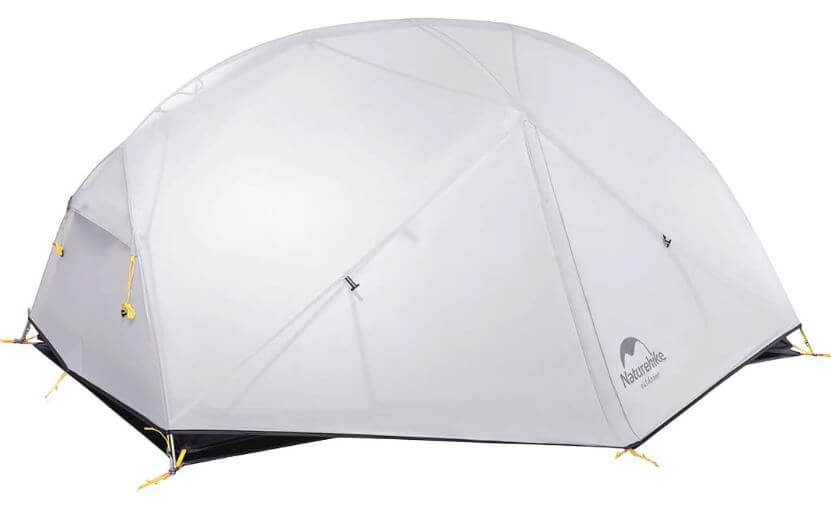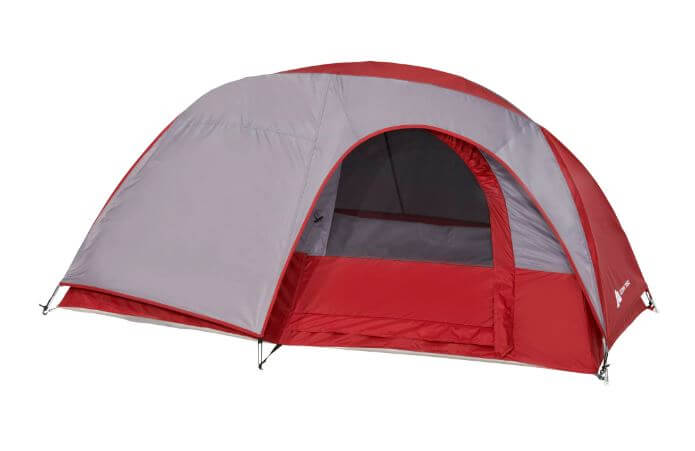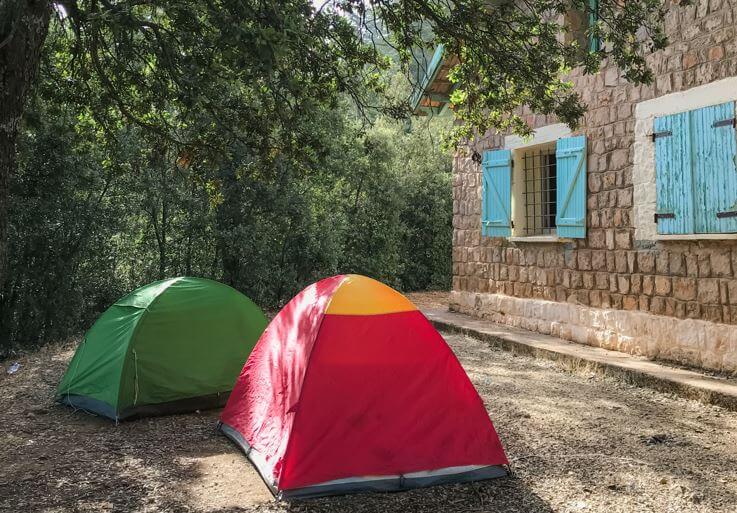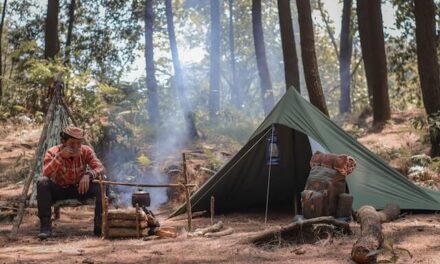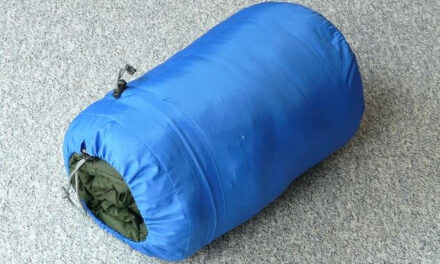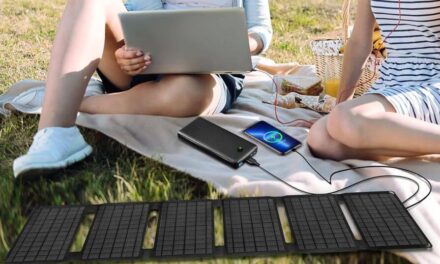Choosing the right tent
Your tent is your home when living outside. It’s your personal domicile, and you should treat it as such. When choosing your tent, consider three things. Space, weight, and quality. How many people are going to sleep in your tent? How much weight are you willing to carry? What is your budget? These questions will determine the type of tent you choose to be your new home. It’s important that you make the right choice for this lifestyle the first time to avoid common problems that will ruin your experience of sleeping outdoors.
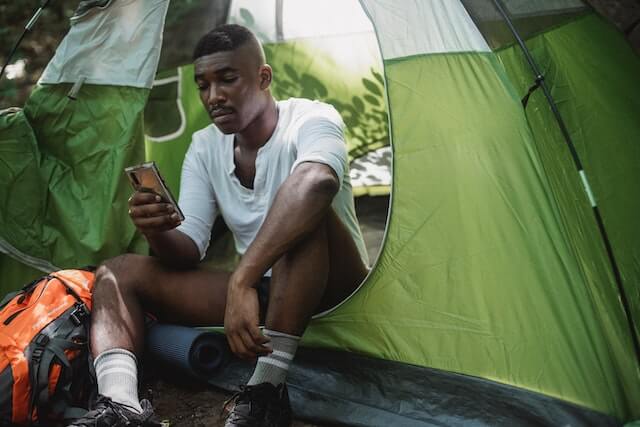
Backpacking Tents
There are hundreds of shapes, sizes, and styles of tents to choose from. When homeless, you should consider backpacking tents. They are made to be as small and lightweight as possible to fit into your backpack. Remember, you need to be able to fit all your essentials in your backpack if you need to move at a moment’s notice. Dome-shaped, Y, and X-frame tents are going to be your lightest and roomiest options.
Make sure the tent is free-standing. Not all tents are. Sometimes you’ll have to camp on rocky ground with no way to stake it down. Always spray the bottom of your tent with some type of waterproofing before use. Give it at least two coats, letting the first coat completely dry. The drying and curing process takes 2-3 days between each coat. You don’t have to spray the rain fly on most tents. Just make sure the waterproof rating is 2-4000mm. You can find that in the specs and I’ll make another post going into detail about tent materials later.
Get a tent with two doors if possible. It helps to have two doors for ventilation when the weather is hot, and when you are heating your tent in the cold. It’s also good to have two doors for security purposes. It’s not a necessity, but a good safety measure to have. If your tent does not come with a footprint, buy one separately. A footprint will stop the rain from sitting directly under your tent. It will give you another layer of protection from sharp objects.
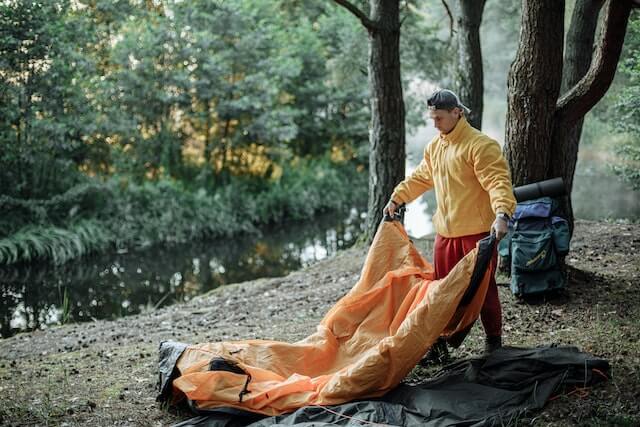
Size and Weight
Most homeless people that you see on the street will have a huge 7×7 foot tent that’s made to sleep 3 to 4 people but is only occupied by one person. That’s too much space and weight for one person. The bigger the tent, the harder it’s gonna be to keep warm when it’s cold. If it’s just one person, you want a tent that qualifies as a solo tent. A solo tent is classified as a one or two-man tent, that weighs between 3-5 pounds. If you are a couple, then you want to look for a 3-4 person tent. Y Frame tents are going to give you the best ratio of size and weight. A good width should be no less than 3.5 feet. Anything less than that will feel really cramped. The length should be at least 6 inches more than your height. And the height of the tent should be at least 3.5 feet for anyone 5’10 or smaller. Anything smaller than 3.5 feet would work best for someone 5’6 or smaller.
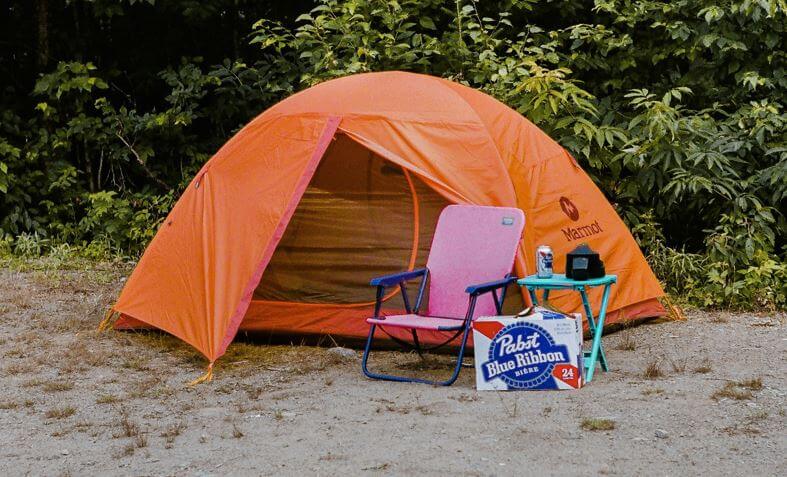
Quality And Price
The quality of your tent is all in the specs. Do your research before you buy. In my experience, you get what you pay for when you buy a cheap tent. As far as pricing goes for a tent, it’s all over the place. You can find everything you want in a tent for as little as $30 or as high as $300. Then there are Big Agnes, MSR, and Zpack tents that weigh 2 pounds or less. You don’t even want to know what they cost.
In my opinion, the price does not make a tent great. It’s all in the material. A quality tent should be made from 20D Nylon or 210T Polyester. The waterproofing index should be no less than 3000mm. No tent is waterproof, so make sure you spray the bottom. I get by fine in my Naturehike Mongar. It’s a carbon copy of a popular MSR tent, at a fraction of the price.
Stay away from one-layer tents. The condensation is terrible and mold can easily become a problem. They should only be used in cases of emergency and not even then. If you’re looking for a cheap emergency or primary tent, try the Ozark Trail 1-Person Backpacking Tent. Size is 7×5 and weighs 4.4 pounds. It makes both a good backup and primary tent if you’re not looking to spend a lot of money. You’ll need to spray the roof and door to prevent rain from getting in, but that’s it.
